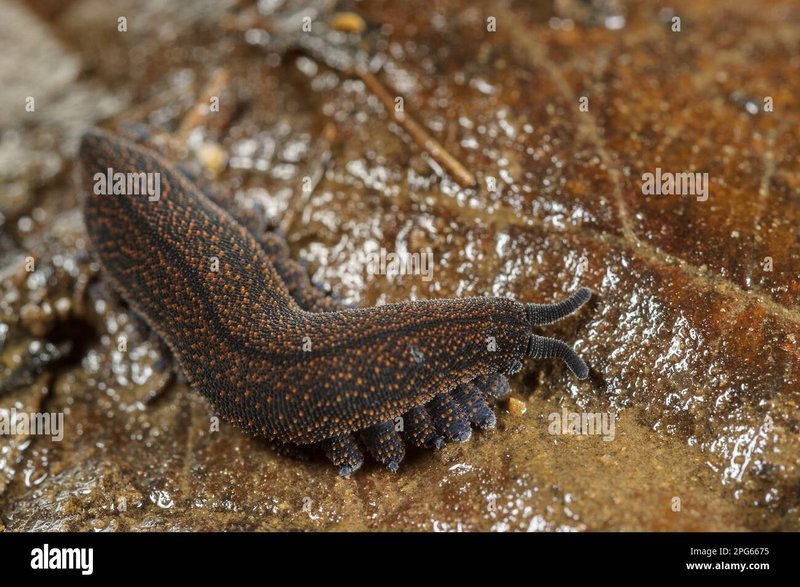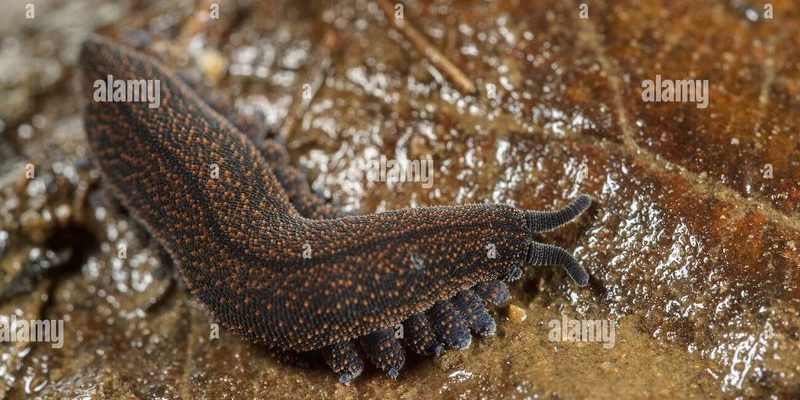
Imagine the forest floor as a bustling marketplace—full of activity and trade, where every organism has a role. Velvet worms act as the silent shoppers, feeding on other small invertebrates and helping maintain the balance of this bustling marketplace. So, let’s dive deeper into understanding these remarkable worms and the ecosystem they inhabit.
What Are Velvet Worms?
Velvet worms, scientifically known as *Onychophora*, are soft-bodied, segmented creatures that look a bit like a cross between an earthworm and a caterpillar. With their velvety texture and numerous stubby legs, they can be quite mesmerizing to watch. Typically measuring just a few inches in length, they come in various colors, ranging from deep blues and greens to earthy browns.
Here’s the thing: these worms are not actually worms at all, despite their name. They belong to a unique phylum and are more closely related to insects and crustaceans. This close relation is evident in their body structure. With antennae that help them sense their environment and slime glands that can shoot a sticky substance at prey, they are truly one-of-a-kind creatures.
You might be wondering where you can find velvet worms. They thrive in moist, dark environments, making leaf litter, under logs, and in decaying wood the perfect homes for them. They prefer tropical and subtropical regions, but they can also be found in temperate zones worldwide.
The Role of Velvet Worms in Forest Ecosystems
In a leaf litter ecosystem, every organism has a job—think of it like a complex dance. Velvet worms contribute significantly to this dance by acting as predators. They primarily feast on soft-bodied invertebrates like snails, insects, and other small critters found on the forest floor.
What’s fascinating is how they hunt. Velvet worms are ambush predators. They use a method called “slime shooting,” where they excrete a viscous, sticky slime to trap their prey. This technique not only helps them capture food but also plays a role in controlling the populations of other invertebrates. By keeping these populations in check, they help maintain a healthy balance in the ecosystem.
Moreover, the presence of velvet worms can indicate a healthy environment. Their sensitivity to changes in humidity and temperature means that when they thrive, it’s a sign that the ecosystem is in good shape. They are like the forest’s canaries, indicating the health of the leaf litter ecosystem.
Leaf Litter Ecosystems Explained
Now that we’ve introduced our velvet friends, let’s explore the leaf litter ecosystem itself. Leaf litter is the layer of fallen leaves, twigs, and organic matter that accumulates on the forest floor. It’s often teeming with life, serving as a habitat for countless organisms.
This ecosystem is essential for nutrient cycling. As leaves decompose, they release nutrients back into the soil, nourishing plants and supporting the growth of trees and shrubs. Here’s an interesting fact: studies show that around 90% of the organic matter in forests comes from this layer.
In leaf litter ecosystems, multiple interactions occur. Earthworms, fungi, microorganisms, and larger animals all play a part in breaking down organic matter. Velvet worms fit into this intricate web, capturing prey and, in turn, becoming food for larger predators, contributing to the food chain. The death and decay of velvet worms can also enrich the soil, further supporting plant life.
How Velvet Worms Adapt to Their Environment
When it comes to survival in the leaf litter, velvet worms have some clever adaptations. For starters, their soft, moist bodies require a humid environment; otherwise, they risk drying out. This is why they thrive in leaf litter and shady areas where moisture is preserved.
Besides their moisture needs, velvet worms are nocturnal. They tend to emerge during the night to hunt, which helps them avoid predators and conserve moisture during the day. They also have a unique feature—an ability to regenerate lost limbs. If they lose a leg to a predator, they can regrow it, ensuring their survival.
Interestingly, velvet worms also communicate with each other using body movements and secretions. They can leave pheromones in their slime, helping them find mates or deter competitors. It’s like they have their own language, hidden under the forest floor!
Threats to Velvet Worms and Their Ecosystem
Despite their resilience, velvet worms face several threats. Habitat destruction is a significant concern, especially as forests are cut down for agriculture or urban development. Loss of habitat not only reduces their population but also disrupts the entire leaf litter ecosystem they help sustain.
Additionally, climate change poses a threat to velvet worms. As global temperatures rise and humidity levels change, their delicate balance with the environment can be disturbed. This could lead to a decline in their populations, impacting the broader ecosystem that relies on them.
You may wonder how we can help these little creatures. Protecting natural habitats, supporting conservation efforts, and raising awareness about the importance of biodiversity are all ways we can contribute to their survival. Every little bit helps!
Why Velvet Worms Matter to Us
So, why should we care about velvet worms? Beyond their quirky appearance, they play a vital role in our ecosystems. They contribute to soil health, support the food chain, and help keep our forests balanced. Each creature, no matter how small, has a part to play in the grand scheme of life.
Understanding these organisms can also inspire a greater appreciation for biodiversity. When we think about the interconnectedness of life, it’s clear that losing a single species can have ripple effects throughout the ecosystem. By valuing velvet worms, we’re valuing the health of our planet.
Plus, studying velvet worms can provide insights into evolution and adaptations. These ancient creatures have survived for millions of years, and learning about them helps us understand more about the history of life on Earth.
In the grand tapestry of life on Earth, velvet worms are the quiet custodians of leaf litter ecosystems. Their unique characteristics and vital role highlight the importance of every organism in maintaining balance. As we trek through our forests, let’s take a moment to appreciate the hidden wonders beneath our feet.
By protecting their habitats and advocating for conservation efforts, we can ensure that velvet worms and the ecosystems they inhabit continue to thrive for generations to come. After all, the health of our planet is intricately tied to the health of every small creature within it. So, the next time you find yourself in the woods, remember those little velvet ninjas and the essential role they play in the world around us.

